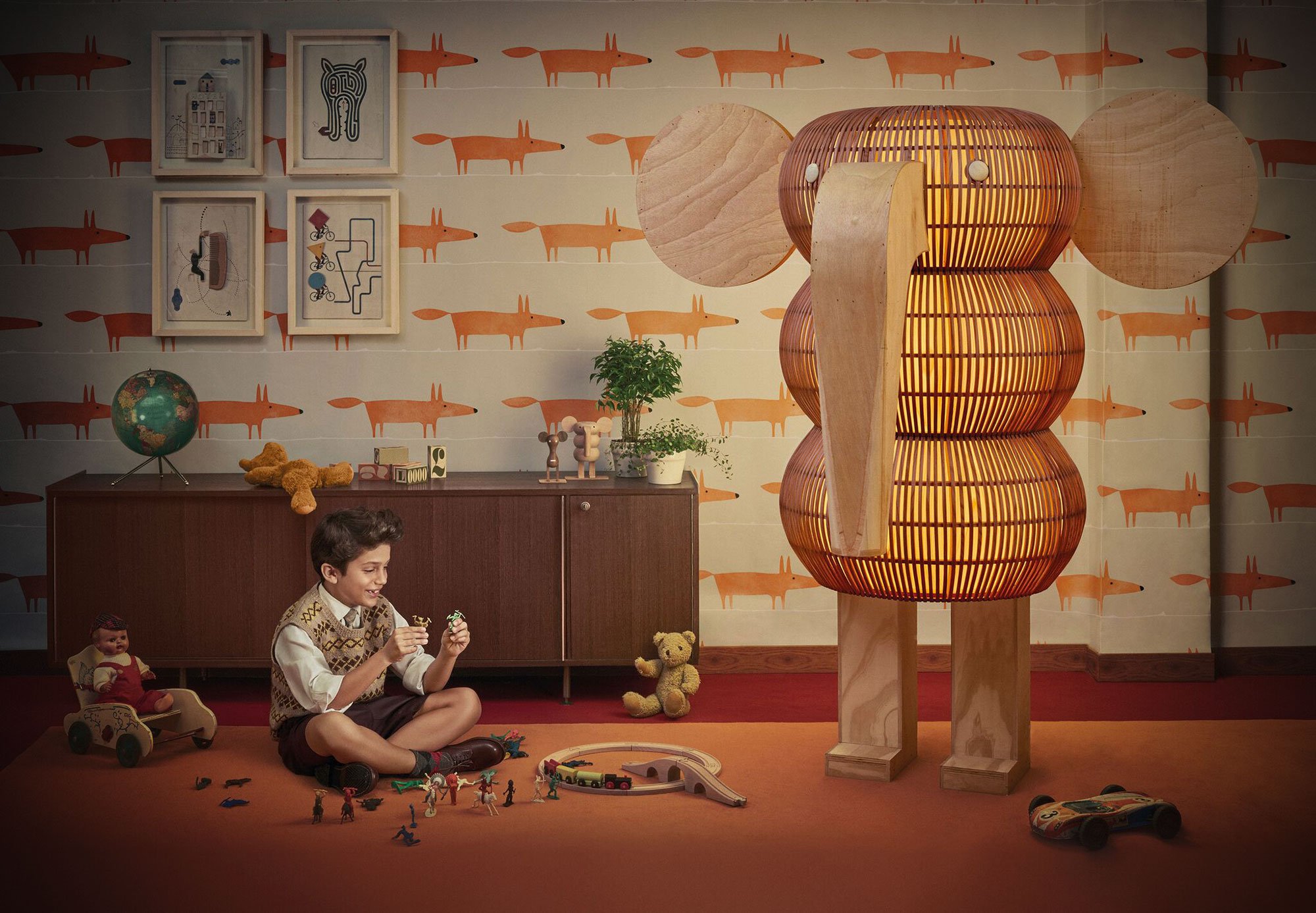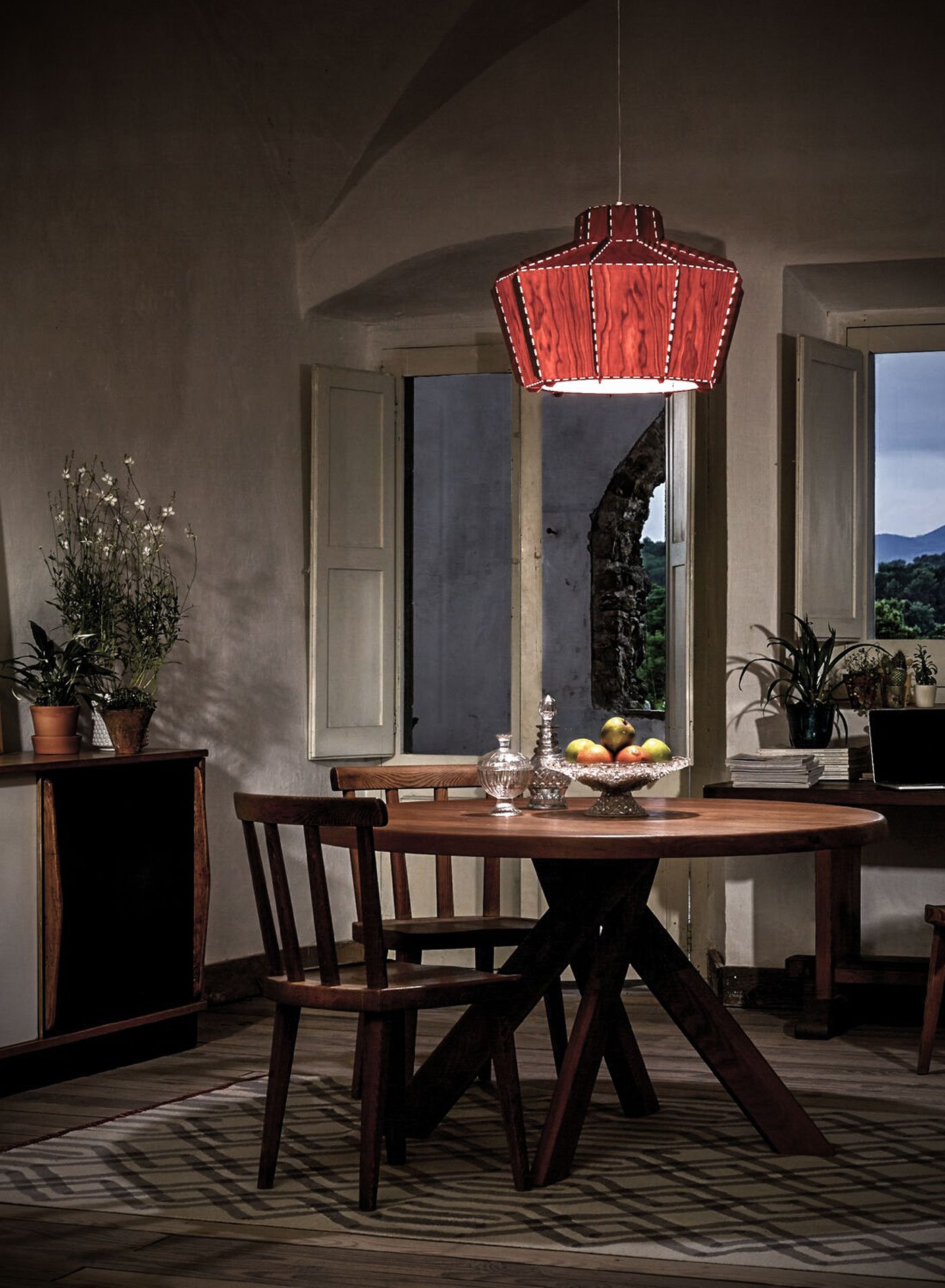Mariví Calvo (also known affectionately as BB) is a Spanish artist/designer and the co-founder and creative director of Valencia-based LZF Lamps. Originally called Luzifer Lamps, Mariví co-founded the company in 1994 together with her partner Sandro Tothill. Designing and making innovative wood veneer lighting fixtures by hand, LZF has grown to become an internationally acclaimed lighting venture.
Mariví has a rather eclectic, creative background. From the mid 1980s to the early 1990s, she displayed her art on both sides of the Atlantic, showing work in New York, Madrid and Paris. Living in Paris in 1991, Mariví started writing and developing The Kitchen Lady, a surrealist dance performance for which she designed the costumes and sets. The Kitchen Lady provided Mariví with a great deal of source material for her ensuing art exhibitions, where she applied photography to canvas paintings. Mariví’s artistic and avant-garde methods are now visible in her work with LZF.

At LZF, Mariví has developed and directed all aspects of the Spanish lighting brand’s creative art department. For her, it is a true labor of love. With a keen intellect, creative mind, meticulous planning and expert curation, Mariví keeps her eyes on the prize and knows what she wants to achieve. She has designed a number of lamps that are emblematic of LZF’s imaginative approach to lighting, including the Guijarros, Gea and Cosmos collections, and the majestic Candelabro. And she is responsible for the design of every LZF exhibit and its numerous prizewinning campaigns. A woman with exquisite taste and obvious passion, Mariví—or BB— is also very personable and unassuming.

Gessato gets behind the design with Mariví Calvo.
What are three words that best describe you?
Direction–supervision, creativity–functionality, order–chaos.
At LZF, lighting design and campaign design are hugely interrelated. What is your process around designing a campaign?
I make a selection of the novelties [lamps] that will feature in the campaign and think about their possible applications—this marks the starting point. Light is always the main axis from which I seek to explore those things that enhance the qualities of a new lamp. I want to maximise its visibility, and use external props to accompany and present it. From here, the search begins for the project’s various collaborators: the photographers, musicians, technicians and so on.
LZF was presented with a Red Dot Award in Communication Design for its brilliantly choreographed, inspired and sensuous Telling Tales 2016 communication campaign. What was the context for this project?
A key element of Telling Tales was the humanization of the each lamp. As the name suggests, we told everyday stories where the characters were the protagonists. Spanish writer Grassa Toro provided the somewhat surreal texts to accompany each image, his poetic narrative contextualizing the whole atmosphere.
With the Telling Tales campaign, we focused the story from dusk to dawn, when a luminaire has its reason for being and its presence is indispensable. The images we portrayed were intimate and pictorial—they were a hyperreal photographic recreation of stories set in the 1950s, with allusions to the realist paintings of American artist Edward Hopper and Hitchcock’s classic Rear Window.
Every LZF lamp is handmade using beautiful wood veneer. What do you love most about wood as a material?
Wood is an extraordinarily beautiful material. It is ancestral and close to us in a very natural way. It is involved in our life and our history, having always lived with us and been part of our everyday. Wood is a relaxing material and looking at it is a pleasure—every piece of wood is different, and at the same time natural and pleasing to the senses. Transparency is a truly amazing property of wood and a core component of LZF’s lamps. Years ago, Sandro and I discovered the translucent nature of wood—by setting the veneers on a light table, we realised what an ideal diffusing material wood made.
What, in your opinion, differentiates LZF from its contemporaries?
We like to take care of every detail. We like to get involved and we love to do what we do.
At LZF, visual and vivid imagery is an extremely important part of the brand’s approach to communication? What do you look for in an image?
We continually think about and question what it is we’re looking for. We strive to connect the viewer with an emotion or a situation in which the protagonist is, indirectly, the lamp. We work to showcase the many possibilities that a product has, but always within an emotional context.
When you look at LZF today, what are you most proud of?
That we could choose and build our own project. That I have been able to count on Sandro, with his natural ability of transmitting who and what we are. That we have created many recognisable products. I’m proud of having built our life and our world together, and having had the privilege of growing along with the various collaborators who have brought us great ideas.
If I can put you on the spot, what is your favourite LZF light?
Stitches [designed by Egbert-Jan Lam of Netherlands-based Burojet Design Studio].
Is there a Spanish architect or designer that you are particularly excited about?
Felix Candela [the Spanish architect] and Isidro Ferrer [who created the cast of Funny Farm characters and the life-size Elephant and Fish for LZF].
When or where are you most happy and content?
In my study and at home.


